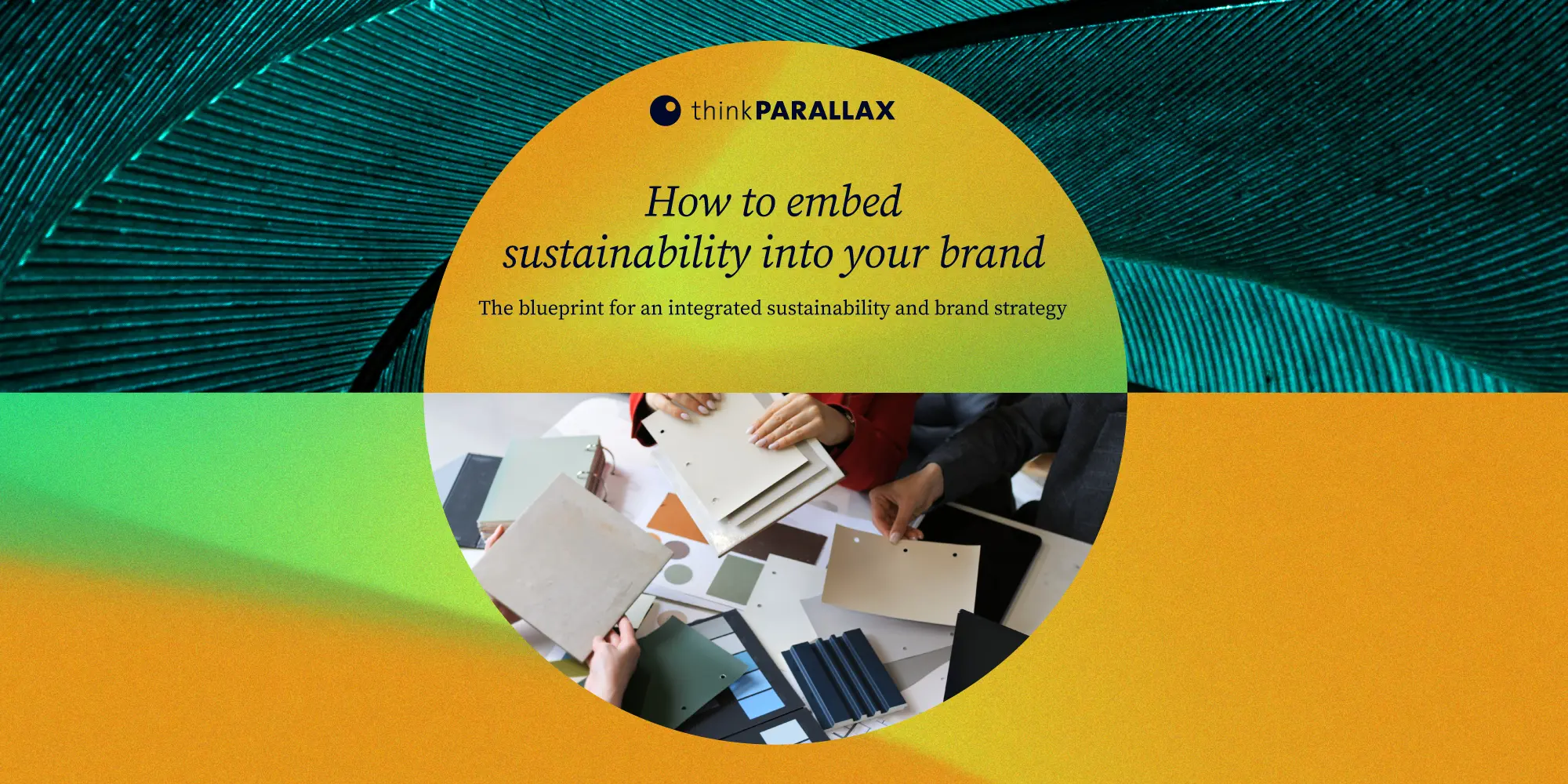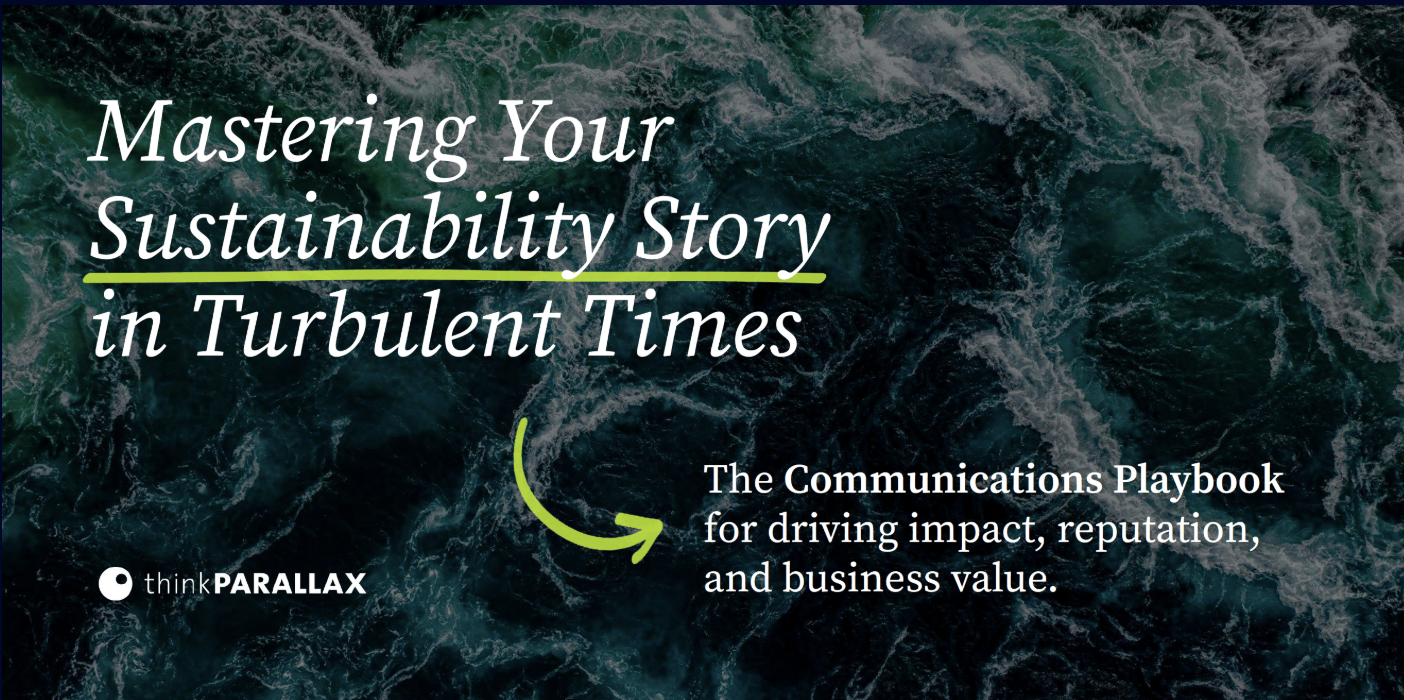Executive Summary
The reminders are constant. The planet is not what it used to be. The effects of human-caused climate change are simultaneously glaringly obvious and so complex they’re difficult to comprehend. Summers are hotter. Forest fires are more frequent, severe, and challenging to manage. Our mountains receive less snowfall, affecting downstream water supplies. We’re facing a biodiversity crisis that has far-reaching consequences for our food systems, and more frequent extreme weather events are unprecedented in their scale and destruction.
Younger generations are acutely aware of these environmental shifts, and their purchasing power and commitment to sustainability are reshaping the economic landscape. A recent collaboration between EcoFocus Research®, a firm dedicated to consumer sustainability behaviors and attitudes for more than a decade, and thinkPARALLAX, a leading sustainability strategy and communications agency—shows just how sweeping these changes are for businesses throughout all sectors of the economy. Gen Z (those born between 1997 and 2012) and Millennials (those born between 1981 to 1996), now represent 30% of the country’s purchasing power. Millennials are currently the largest group of consumers. Gen Z, the newest cohort to enter the workforce, will be the wealthiest generation by 2030, with an estimated $12 trillion in spending power.
This new data underscores the pervasive impact of environmental considerations on economic behavior. The fact that Gen Z cares more about sustainability than previous generations is nothing new, but the new data shows just how extensive and emphatic that trend is. From shopping preferences to career choices, few sectors will remain unaffected by these generational trends.
Expanding generational differences
The data shows a clear generational shift in a commitment to sustainability. Of those surveyed, 80% of Gen Z and 78% of Millennials describe their lifestyle as green or eco-friendly, compared to 69% of Gen X and 70% of Boomers. A vast majority (83%) of Gen Z and Millennials consider environmental reasons when choosing products, demonstrating that sustainability is a core factor in their purchase decisions. Climate change is the driving concern among younger generations, with 78% of Gen Z and 79% of Millennials expressing worry. While older generations show less concern about climate change specifically, they are more likely to agree that reducing waste and pollution is common sense, regardless of beliefs about global warming, suggesting different motivations for environmental action across generations.

What this means for your communications
The data is clear: sustainability can drive business growth. But it’s not enough to just do the work. Your audience—including current and prospective customers and employees—need to understand what you’re doing and how you’re doing it. That’s why strategic, targeted communications are essential to any sustainability roadmap. Here are a few questions to keep in mind before developing your sustainability communications.
Who is it for?
Every piece of communications work your team develops should have a specific, targeted audience. Identifying who that audiences is and what matters to them is essential to developing your story.
How are you tailoring the story to that audience?
The way you tell that story should be different based on your answer to this question. For example, if you have an impressive story to tell shareholders about lowering your scope 1 and 2 emissions, you might want to focus on how this impacts your financial risks. For a younger consumer audience, you might work with influencers and your social media team to develop graphics and videos that speak to why that work is essential to the fight against climate change.
Where are they going to see it?
You’ve done the work and you’ve determined your various stories and audiences—now how are they going to hear about it? Your in-depth, disclosure-focused 75-page PDF is critical for your business. But are you expecting your customers or employees to read that? Probably not. So how can you reach those audiences? Consider tactics like a social media campaign and microsite for your customers, and a monthly internal newsletter focused on sustainability for your employees. If the audience, language, and narrative angle is fundamental to your sustainability communications strategy, so too is tailoring your message for the right medium.

Changing corporate expectations
Gen Z (86%) and Millennials (89%) have higher expectations for government action, wanting state and federal authorities to revise laws to encourage more sustainable business practices. This compares to slightly lower expectations from Gen X (82%) and Boomers (83%). The data suggests younger generations are looking for systemic change to support sustainability.
When it comes to retail, younger consumers are driving change, with 62% of Gen Z and 56% of Millennials considering it important to shop at stores that require eco-friendly products, compared to 43% of Gen X and 37% of Boomers.
Gen Z and Millennials believe retailers should base their product selection on environmental friendliness (64% and 68%, respectively), including packaging (66% for both). This shows an expectation for retailers to act as gatekeepers for sustainable products.
Younger consumers show a greater willingness to invest in eco-friendly products—52% of Gen Z and 53% of Millennials believe it’s worth paying more for environmentally friendly options, compared to 39% of Gen X and 36% of Boomers. Nearly 90% of Gen Z and Millennials also believe sustainability certifications, such as B Corp, USDA Organic, Fairtrade, Rainforest Alliance, and GOTS, were influential in making a purchase decision.
This data implies a higher perceived value of sustainable products among younger generations—despite high levels of economic concerns. Gen Z and Millennials are more likely to boycott products from companies with poor environmental track records: 53% of Gen Z and 50% of Millennials have avoided such purchases, compared to 36% of Gen X and 29% of Boomers. This trend is forcing brands to improve their environmental practices or risk losing market share.

What this means for your strategy
The mandate from younger generations is clear: Brands need to drive meaningful environmental and social progress. But what exactly does that look like and where do you start?
• Do something about climate: Gen Z and Millennials agree that climate change is the most critical environmental issue. What strategies does your company have in place to help fight the climate crisis? How are you communicating that work? Those stories are going to resonate with a younger audience.
• Progress over perfection: Nobody expects companies to be perfect. What’s important is to be transparent about your progress, even if the numbers aren’t going in the direction you want them. That requires consistent data, such as annually measuring your emissions, water, and energy usage, and your team’s demographic trends, and the strategies you have in place to meet your company’s sustainability goals.
• Certifications matter: Younger generations pay attention to the certifications that can add third-party validation to your sustainability work. Is the Global Organic Textile Standard relevant to your business? If not, could your business use Fair Trade Certified materials or become a B Corp or a 1% for the Planet member? Developing these partnerships provides an opportunity to include them on various touchpoints on the customer journey—from digital marketing materials, to content partnerships, to packaging.
• Responsible packaging: For consumer packaged goods companies, the way you package your products should be at the forefront of your go-to-market strategy.
The opportunity ahead
The evolving economic landscape is unmistakably shaped by the values and preferences of younger generations. Millennials and Gen Z are not just participants in the market; they are driving a fundamental shift that is redefining the expectations of businesses.
Companies that fail to adapt to these new realities will not only face reputational risk, but will also likely struggle to remain relevant, attract and retain talent, and meet consumer demand. Sustainability is no longer a niche concern but a central pillar of economic strategy. Embracing this shift is not just about meeting consumer expectations—it’s about staying relevant and competitive in a rapidly changing world.
The good news is that if your company hasn’t started (or isn’t doing much) yet, it’s not too late. Making significant shifts in your operations, products, and brand take time, but there are a few steps your company can take now:
• Uncover the stories you can tell today. Do you have practices, processes, or systems that improve efficiency, conserve resources, or positively impact people or the environment? Is there an ingredient or part of your product that is sustainably sourced or less resource intensive than alternatives? Make a list of the claims you’d like to be able to make today, then assess them for credibility and validity for your communications.
• Share those stories accurately. Greenwashing risk is real. Litigators are cracking down on companies for misleading consumers. The public is more knowledgeable than ever and can see through vagueness and claims not backed by data. Third party assurance, certifications, and transparent detailed-oriented communications will help your business avoid the pitfalls of greenwashing (or greenhushing).
Meanwhile, start developing your plan for the future:
• Get clear on your environmental impacts. Analyze your supply chain, operations, and downstream impacts on people and the environment to uncover your greatest risks and opportunities for making real positive change. Prioritize opportunities based on what is core and most actionable for your business.
• Build your sustainability roadmap with your story in mind. Your sustainability strategy and story should be developed in tandem. The best strategies take into account not only where you have the opportunity for impact, but also consider what is authentic to your brand and where you have an opportunity to differentiate.
As Gen Z and Millennials become the generations with the most purchasing power in American history, businesses have an incredible opportunity ahead to not only meet the demands of today’s eco-conscious consumers but build a more resilient business and position themselves as a leader in the green economy of tomorrow.
The imperative is clear: adapt to the sustainability revolution or risk being left behind.
Methodology
The EcoFocus Sustainability Survey examines U.S. consumer attitudes and behaviors about sustainability and the trends impacting businesses today. EcoFocus has conducted the annual survey, which lasts about 20 to 25 minutes in duration, since spring 2010, completing the most recent version in June and July 2024. The margin of error is +/- 1.55%. The study is nationally representative of Americans, ages 18 and up, balanced to the U.S. census. U.S. Gen Pop (n=4,002) and Grocery Shoppers (n=3,899).






